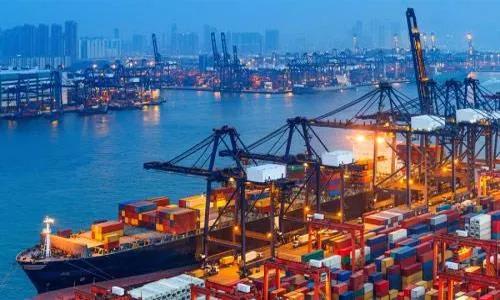Views: 10 Author: Site Editor Publish Time: 2021-05-14 Origin: Site

With the repeated epidemics in Europe and the United States, the surge in traffic from Asia to Europe will continue until the third quarter of this year. Congestion in European and American ports will continue to be the main bottleneck in the supply chain, and container prices will continue to rise.
European routes: The epidemic in Europe has experienced multiple rounds of repetition, and a large number of supplies, especially daily necessities and medical supplies, need to be imported and supplemented, which promotes an increase in transportation demand. The turbulence in the schedule caused by the blockage of the Suez Canal also put pressure on capacity allocation. The booking quotations of some shipping companies rose slightly last week. On May 7, the freight rate (ocean and ocean freight surcharges) SCFI for exports from Shanghai to the European basic port market was US$4678/TEU, an increase of 1.0% from the previous period.
Mediterranean routes: Last week, most shipping companies kept the original freight rates unchanged, and some shipping companies increased their freight rates. The overall freight rates of the routes increased slightly. On May 7, the freight rate (ocean and ocean freight surcharges) SCFI for exports from Shanghai to the Mediterranean basic port market was 4,803 US dollars/TEU, up 2.1% from the previous period.
North American routes: The epidemic situation in the United States is still severe. At present, more than 45,000 people are infected every day, and the market's import demand for various materials continues to remain high. Since the outbreak of the epidemic, stagnant container pressure has caused port congestion and container turnover has become the norm. In order to make up for the insufficient capacity caused by the congestion of the Suez Canal, some shipping companies have allocated the capacity of North American routes to European routes. The most recent FBX spot freight rate from Asia to the US East increased by 6.0% to US$6,588 per 40 feet. The spot freight rate from Asia to West America increased by 4.0% to US$5041 per 40 feet
yuan.
Data from Container xChange, a platform that tracks global container flows, shows that nowadays, containers are pouring into major European ports, and the imbalance in the number of containers entering and leaving the port is still serious. Container xChange CEO Schlingemeier reminded that in India , the epidemic will hardly get better in a short time, and with the postponement effect of the Suez Canal congestion, global demand is still at a high level, and container prices will hardly fall back.
Container xChange's "Container Availability Index" (CAx) shows that the three major European ports-Rotterdam and Antwerp in the Netherlands and Hamburg in Germany are witnessing the flooding
In the 17th week (end of April) of 2021, the number of 20-foot dry cargo containers accepted by the above three ports has increased by more than 3% compared with the previous week.
Among them, the port of Rotterdam received the largest number of 20-foot dry cargo containers. Compared with the previous week (week 16 of 2021), CAx increased by 3.75%; CAx at the Port of Antwerp increased by 3.5%; Port of Hamburg increased by 2.2%.
CAx shows that since March, the container throughput of the three major European ports has been greater than that of the same period in previous years, and they have all tended to be saturated. As far as the Port of Hamburg is concerned, in the ninth week (early March) of this year, the CAx was 0.8, but by the 17th week (end of April), the CAx had soared to 0.93, and the container intake was almost saturated.
The Port of Antwerp is also in the same situation. The port's CAx has risen from 0.38 at the beginning of January this year to 0.9 at the end of April. The situation at the British Port of Felixstowe, where the number of containers has always been at a high level, is even more difficult. In the third week of this year, the CAx of the Port of Felixstowe reached 0.87, while at the end of April this index CAx hovered at 0.95.
Still reluctant to carry empty boxes?
Currently, major European ports are experiencing heavy container congestion: empty containers are not to be seen. After arriving at major European and American ports, many container ships departing from China are eager to make a U-turn at the destination port. As a result , empty containers in many places in Europe and the United States have not been able to squeeze into the ship's space.
And behind the shipping companies' choice to rush to unload their cargo and unwilling to carry empty containers is the rising container prices since last year. This is true for both new containers and second-hand containers.